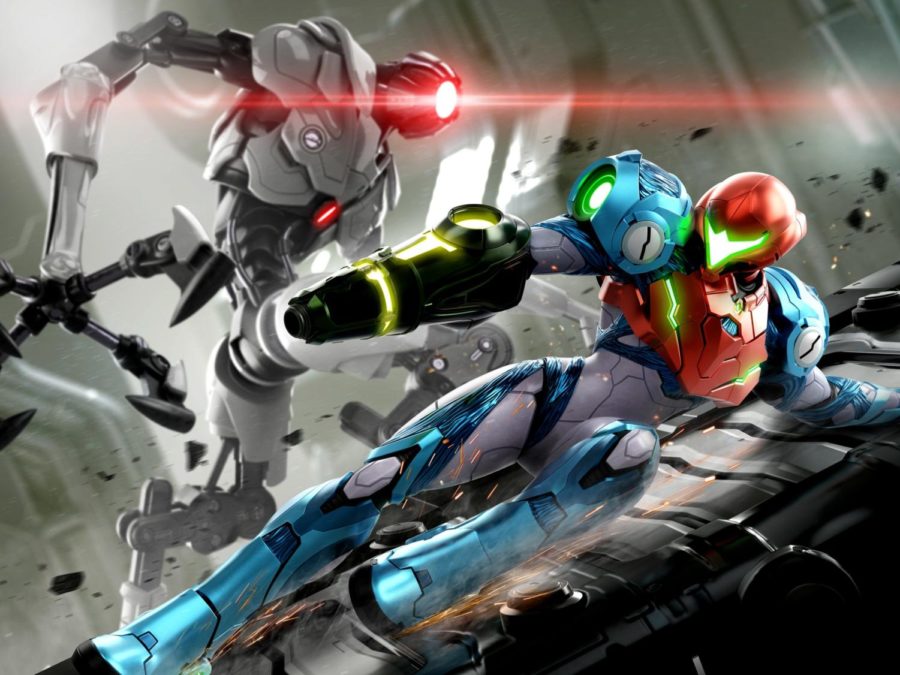“Metroid Dread” revives the legendary series for a final outing
Samus Aran returns for the fifth entry of the mainline “Metroid” series after being on ice for 19 years.
It’s been 19 years since the last main-line entry in the “Metroid” series. Nineteen long years. Most of us students here at Case Western Reserve University cannot even remember 2002, when “Metroid Fusion” came out for the Game Boy Advance. For such an influential series to have taken such an extended hiatus is quite the tragedy, but now bounty hunter Samus Aran is back for another thrilling and suspenseful adventure on the Nintendo Switch.
“Metroid” first introduced itself to the world in 1986 on the Nintendo Entertainment System and immediately changed video games forever, so much so that it spawned an entire genre. Introducing the concepts of open-ended worlds with interconnected areas, “Metroid” had players starting out extremely powerless and gradually gaining upgrades that then allowed them to navigate more freely, accessing new areas. Through this process of continual enhancements, players become more confident over time, eventually transforming into an ace bounty hunter by the end. Steeped in the sci-fi aesthetics of the “Alien” motion picture series, “Metroid” drops players in a world filled with uncertainty around every corner that is explored without any form of guidance. Instead, the game unfolds in a non-linear fashion, with players returning to areas previously explored in order to find new access points, all while dealing with the monstrous parasitic Metroids. Also groundbreaking is the character of Samus Aran herself, who acts as one of the first woman protagonists in an action video game. All this together made “Metroid” a smash success, with several sequels soon to follow.
“Metroid II: Return of Samus” arrived on the Game Boy in 1991, making it the first portable entry, and had Samus hunting down the entire titular Metroid species to extinction to prevent them from being weaponized. But it is in 1994’s “Super Metroid” that the series truly shines. Polishing the formula of the series and expanding on it all the same, the third entry completely redefined what a side-scrolling action adventure could be. With smoother controls, more detailed environments, enhanced exploration and a pervading sense of isolation, “Super Metroid” absolutely nails the feeling of empowerment, delivering on the promise of the first “Metroid.” It is still regarded as one of the greatest games of all time.
Since then, the series has never really been able to top itself, and Nintendo knew this. The first of many hiatuses began as fans waited eight years for a new installment. The wait was rewarded with not one but two new entries, the follow-up “Metroid Fusion” along with a new 3D spinoff, “Metroid Prime.” Both were well-received, with “Prime” specifically garnering mass critical and commercial acclaim as it tactfully transitioned the series into the third dimension. “Fusion” also enjoyed substantial praise, continuing the main story of the series as Samus set out to eradicate the shapeshifting X parasite. “Fusion” also saw a transition towards a more story-focused adventure, with the game progressing much more linearly than “Super Metroid.” It was still a great entry but failed to live up to the expectations of uber-“Metroid” fans, leaving many wanting a more challenging experience that would give them that feeling of isolation that “Super” did so well.
Now, nearly two decades later, the latest installment tries to recapture this feeling to an even greater extent, all the way up to the point of “dread.” Titled “Metroid Dread,” this fifth mainline “Metroid” aims to make players feel constantly on edge as they navigate the labyrinthine world of planet ZDR. With a massive, convoluted map and harder-than-ever enemies, Samus is more powerless than ever as she tries to make her way out. All the while, she is hunted by nearly indestructible robots known as EMMIs that will kill Samus with one hit if they manage to come across her. So as the player goes through the game, they must constantly proceed in a careful and sometimes stealthy manner—until they are inevitably discovered and must scramble to an available exit. Meanwhile, the story-focus of “Fusion” continues as Samus discovers more about her lineage and the origins of the Metroid species. With all this together, “Dread” shakes out to be possibly the greatest entry in the series, expanding on the formula of “Super Metroid” while still delivering on a satisfying narrative. Samus’s journey of empowerment has never felt so satisfying and is aided all the more by the slickest controls in the entire series.
Now that “Metroid” is back, even though “Dread” is marketed as a conclusion to the original story arc, this taste is too enticing to not want even more. One can only hope that a full-fledged revival of the series is in the works and that Samus’s adventures will continue. Heaven knows we’ve missed her all these years.

Shreyas (he/him) is a fourth-year student majoring in biology and philosophy. If he isn't yammering to you about how great "Pet Sounds" is or making bad...


